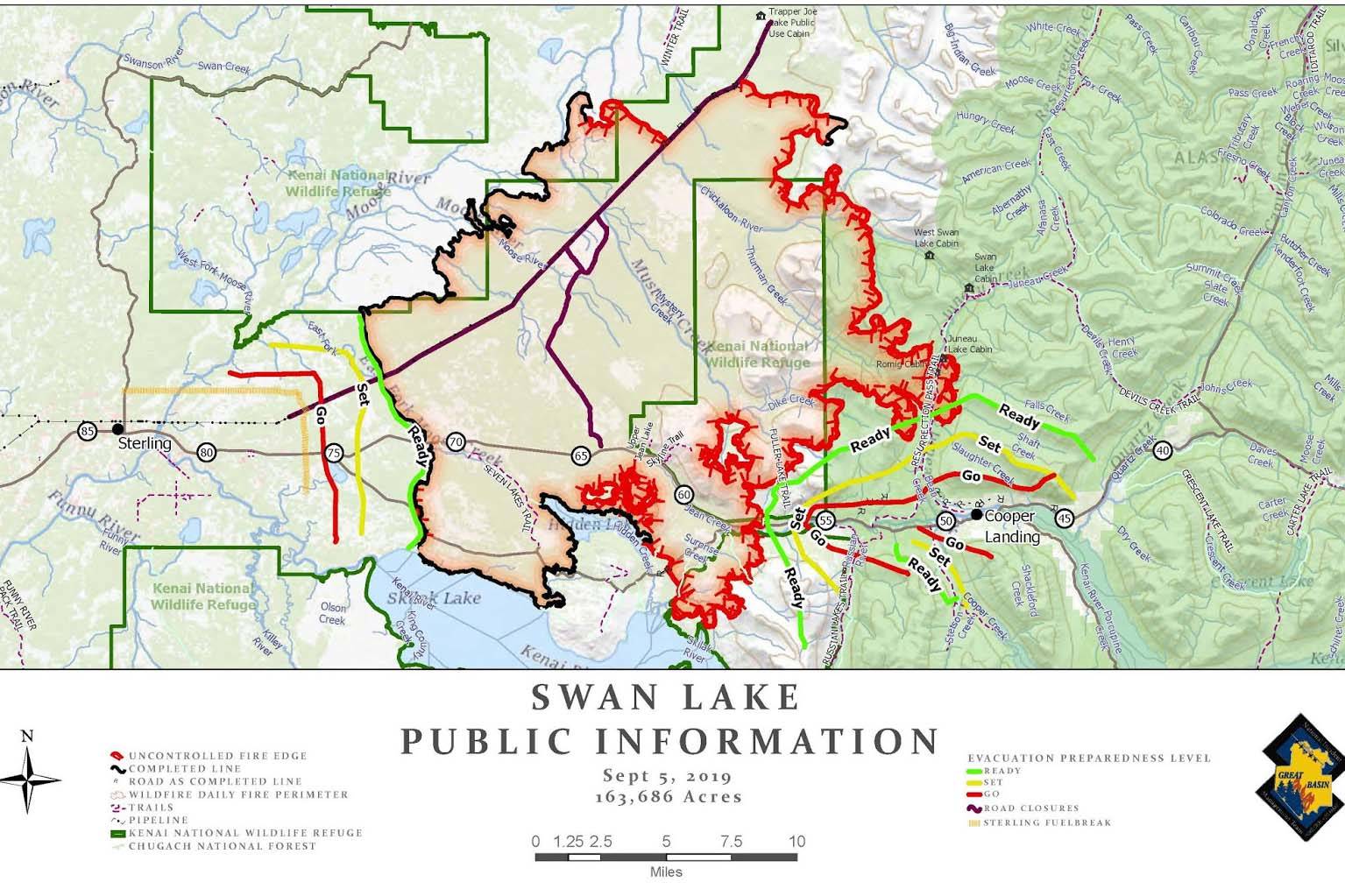The Great Basin Incident Management Team will be concluding their management of the Swan Lake Fire early next week.
Fire managers have made the decision in cooperation with local agency administrators to transition fire management to the Type II Northern Rockies Team 4, according to the latest update from the incident management team.
“We are already in communication with the incoming incident management team, sharing information with them,” Incident Commander Marty Adell said in Thursday’s update. “Many firefighters, air resources and equipment will remain through the transition and will continue to work with the new team. Our team is committed to ensuring that the new team will be successful.”
Type II incident management teams have similar capabilities to Type I teams, but typically work with a smaller number of personnel. Adell said at the Cooper Landing community meeting last Tuesday that he anticipates between 400 to 500 personnel to be part of the Type II team. The Type I team currently monitoring the fire has been working with about 700 personnel.
Public information officer Tim Jones said on Thursday that fire crews from the Type I team have finished establishing most of the planned containment lines and structure protection measures for the perimeter of the Swan Lake Fire. The focus of the Type II team will be to actively maintain these measures and ensure they prevent any further growth from the fire. The fire is currently at 163,686 acres with 29% of containment objectives completed.
The incoming incident management team will arrive over the weekend, work together with the current team on Monday and take command of the fire Tuesday morning.
Strong winds are expected on Sunday due to a low-pressure weather system entering the area. These winds will be followed by wetter conditions and chances for precipitation beginning next week.
Cooler temperatures and higher humidity levels this week have moderated fire behavior, especially in the area of Cooper Landing. Crews in Cooper Landing continue to increase defensible space around homes in the community as hand crews on the eastern flank of the fire continue to extend containment lines and install hose lays from Trout Lake south to Shaft Creek. Frequent helicopter bucket drops are being used in that area to prevent the fire from spreading to Cooper Landing.
South of the Sterling Highway on the eastern flank of the fire, firefighters have completed 4 miles of containment lines from the Russian River to Surprise Creek, and on Wednesday scooper planes performed water drops between Hidden Lake and Skilak Lake Road.
The containment line along the western edge of the fire near Sterling continues to hold, and crews are working each day to strengthen that line by clearing fallen trees and mopping up hot spots.
With the recent rain and resulting reduction in fire danger, all campfire and fire restrictions for Kenai National Wildlife Refuge, Kenai Fjords National Park and Chugach National Forest lands on the Kenai Peninsula are lifted. Although fire danger has decreased over much of the peninsula, residents and visitors are urged to continue using caution with campfires.
Questions regarding this announcement should be directed to Kenai Fjords National Park at 907-422-0500, Chugach National Forest at 907-743-9500 or the Kenai National Wildlife Refuge at 907-262-7021.
The latest smoke outlook for the Kenai Peninsula shows that Cooper Landing could reach air quality levels that are unhealthy for sensitive groups over the next few days, and moderate air quality is anticipated for the Soldotna area.

